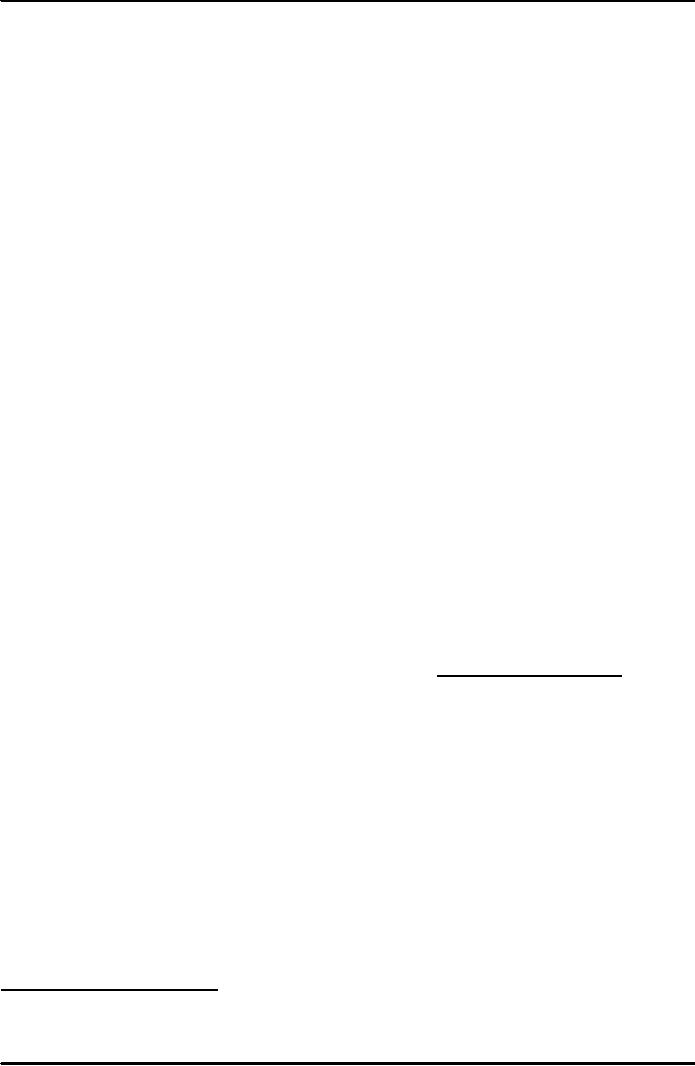 |

Introduction
to Economics ECO401
VU
Lesson
11.7
THE
FOUR BIG MACROECONOMIC
ISSUES AND THEIR
INTER-RELATIONSHIPS
(CONTINUED.......)
RELATIONSHIP
BETWEEN THE "BIG
FOUR"
Big
Four In Case of Short
Run:
In
the short-term (up to about
two years), the big
four objectives of faster
growth, lower
unemployment,
lower inflation and the
avoidance of balance of payments
deficits are all
related.3 They all depend on
aggregate demand, and all
vary with the course of
the trade (or
business)
cycle.
In
the expansionary phase of
the trade cycle (i.e.
just following a recession), AD
grows rapidly,
the
gap between actual and
potential output narrows and
unemployment (of the
demand-
deficient
sort) falls. However, rising
demand puts pressure on
prices (inflation), sucks
in
imports
and lowers competitiveness,
moving the balance of
payments towards a deficit.
Thus
two
of the problems get better,
two worsen. The opposite
happens in the contractionary
phase
of
the cycle (i.e. just
following a boom).
Big
Four In Case of Long
Run:
In
the long-run, and in a LIC
context, however, the
inter-relationships between the
four
variables
can get quite complex. We
therefore take a more
detailed look at the two
way
relationships
between pairs of
issues.
a.
Inflation-unemployment:
This
has already been covered
extensively under the
Philips
curve
discussion (both under
unemployment and inflation).
Whether there is actually
a
trade-off
depends very much on which
theory you subscribe to:
monetarist or
Keynesian.
b.
Growth-inflation:
Economic
growth is likely to put
pressure on prices if there is
no
slack
in the economy and more
production requires workers to
work overtime,
machines
to be used 24 hours a day
etc. Depends also on whether
growth is demand
led
or supply led. If it is the
former (as in the example
above), then it is the AD
curve
which
is shifting right, given an
upward sloping supply curve.
If it is the latter, then
we
are
in the realm of AS shifts
(due to technology improvements
etc.) and given a
downward
sloping demand curve, prices
will fall. The reverse
relationship between
inflation
and growth is almost always
negative. An exogenous rise in
prices (as caused
by
the oil price shocks of
the 1970s) is equivalent to a
leftward shift in the AS
curve,
which
causes equilibrium output to
fall. Also, high inflation
deters investment
through
the
uncertainty effect. Low
investment reduces both the
productive capacity of
the
economy
(AS shifts left), and
decreases the investment
component of aggregate
demand
(AD shifts left). The
combined effect on output is
likely to be extremely
negative.
c.
Growth-unemployment:
Episodes
of high economic growth will
usually be
characterized
by low unemployment, but
this is not necessarily
true. If growth reflects
a
switch
in production away from
agricultural commodities and
light manufactures
(labour-intensive)
to capital intensive goods or to
capital-intensive ways of
producing
agricultural
commodities or light manufactures,
then unemployment can
actually rise,
as
labour is substituted by capital
(machines). By the same
logic, it might be
that
3
We
speak, of course, in the
context of mature HICs,
although an extension of this to
LICs would not be
entirely
misplaced.
123

Introduction
to Economics ECO401
VU
growth
is moderate or zero, but a
switch towards labour-intensive
production causes
unemployment
to fall considerably. The
reverse relationship is obvious.
Labour is a
resource
and when unemployed implies
the economy producing much
below its
potential.
Thus high growth is unlikely
to be seen in the presence of
high
unemployment.
Also unemployment can affect
growth through the former's
effects on
social
stability, crime, law and
order. High unemployment is
often associated with
riots,
strikes
and other disruptions (esp.
if there are no so social
safety nets like
unemployment
benefit) and these seldom
help the cause of productive
activity or
growth,
at least in the
short-term.
d.
Growth-BOPs:
This
depends on whether growth is of
the import-substituting
industrialization
(ISI) sort or export-oriented
variety. ISI: If the country
(e.g. India from
1947-
to the 1980s) imports a lot
of capital and machinery in
order to set up
industries
that
can produce consumer goods
for the home market
that were earlier imported
form
abroad,
then this country can
experience growth but a high
current account
deficit
initially
(because the country
produces not for the
world market but for
the home
market,
so exports are low while
imports of capital are
high). Export-led: If a
country's
growth
is mainly attributable to its
capture of a larger share of
world markets through
exports,
then that country is more
likely to generate current
account surpluses as it
grows.
East Asian countries are
prime examples. See also
the relationship
between
higher
imports and growth/employment
(below) .The reverse
relationship is more
complicated.
On the one hand, we see
that a country with a fixed
exchange rate will
experience
a loss in reserves, a monetary
contraction and thus a
reduction in
aggregate
demand (and hence growth)
when faced with a BOPs
deficit. On the other
hand,
if the current account
deficit (or capital account
surplus) reflects an
underlying
private
sector resource gap and is
financing productive private
sector domestic
investment,
then the long-term growth
implications might be positive
(due to higher
domestic
private investment). In a related
vein, if the private sector
is importing a lot,
but
the imports are
knowledge-intensive and/or have a
high technology/skill-content
that
can further the learning
and development of importing
country producers then
the
long-term
growth implications might be
even more positive.
e.
BOPs-unemployment:
The
impact of BOPs deficits on
unemployment (though
growth)
is described above. Another
channel could be as follows: If
the BOPs deficit
largely
reflects domestic consumers
switching from local goods
to imports, then a
BOP-
could reduce domestic
activity, growth and hence
employment. The
reverse
relationship
would run as follows: High
unemployment means low
incomes in the
hands
of consumers. Low incomes
would imply low spending.
The cut in spending
would
also fall partly on imports,
and therefore the BOPs
would improve.
f.
BOPs-inflation:
Under
a fixed exchange rate
regime, a BOPs deficit
reduces domestic
money
supply which, as per the
quantity theory of money,
should reduce prices.
With
floating
exchange rates, a BOPs
deficit will cause local
currency depreciation,
which
would
make imports more expensive.
Since imported goods are
also included in the
basket
of goods used in the
consumer price index,
inflation would be seen to
increase
following
the depreciation. The
reverse relationship works
through competitiveness
and
real
exchange rates. Higher
domestic inflation (relative to
the rest of the world, or
our
trading
partners, to be precise) will
lower export competitiveness,
causing the current
account
to worsen. Since higher
inflation also reduces the
real interest rate (note:
real
interest
rate = nominal interest rate
inflation) or real return on
domestic financial
assets,
the foreign demand for
such assets falls, causing
the capital account to go
into
deficit
as well. The combine effect
on the BOPs can thus be
quite negative.
124

Introduction
to Economics ECO401
VU
The
Salter-Swan Diagram:
A
framework which allows the
relationships between the
above macroeconomic problems
to
be
analyzed and appropriate
policy prescriptions to be derived is
the Salter-Swan
diagram.
The
diagram uses (real) exchange
rateabsorption space, where
the exchange rate is
defined
as
Rs. per $, and absorption is
a term for aggregate
demand-injection variables
(like
government
spending, money
supply).
The
Internal Balance and
External Balance:
The
internal balance (IB) line
(combination of points where AD = AS in
the economy) slopes
downward,
explained as follows: Given
fixed AS, he more
appreciated the exchange
rate (the
lower
it is on the vertical axis),
the lower the imports,
the lower the AD,
and therefore the
higher
the required level of
demand-injection (rightward movement on
the horizontal axis)
in
order
to bring AD back up to the
level of AS. Thus IB slopes
downward. At any point to
the
right
of IB the exchange rate is
more depreciated than is
consistent with internal
balance, and
therefore
the economy is likely to be
experiencing higher AD than
AS, and thus inflation.
At
any
point to the left of IB,
the economy faces
unemployment.
The
external balance (EB) line
(combination of points where
exports = imports),
slopes
upward,
explained as follows: As absorption
increases, AD and imports
increase, thus
requiring
a more depreciated exchange
rate to bring the current
account back to
balance
(through
higher exports and lower
imports). Thus EB slopes
upward. At any point to the
right
of
EB, the exchange rate is
more appreciated than is
required for external
balance (also called
overvalued
exchange rate), and
therefore the economy must
be facing a current
account
deficit.
To the left of the EB,
there is a current account
surplus.
The
intersection of IB and
EB:
The
intersection of IB and EB delivers
the joint internal and
external equilibrium for
the
economy.
The economy may in reality
not be at this point but be
on only one of the IB or
EB
lines.
In this case it will
gradually move to equilibrium
along the line it is on.
The economy can
also
be in any of the four
quadrants: north (inflation,
CA+), west (unemployment,
CA+), east
(inflation,
CA-), south (unemployment,
CA-). LICs often find
themselves in the east
quadrant
where
there is both inflation and
unemployment. A combination of
devaluation and lower
absorption
(tight monetary and fiscal
policies) can often do the
trick.
125

Introduction
to Economics ECO401
VU
END
OF UNIT 11 - EXERCISES
Assume
that the government wishes
to reduce unemployment in the
economy.
Assume
that every year from
year 1 onwards the
government is prepared to
expand
aggregate
demand by whatever it takes to do
this. If this expansion of
demand gives 7
per
cent inflation p.a., fill in
the table (below) for
the first six years. Do
you think that
after
a couple of years people
might begin to base their
expectations differently?
Actual
Expected
Year
=
+
inflation
Inflation
1
7%
=
7%
+
0%
2
14%
=
7%
+
7%
3
21%
=
7%
+
14%
4
28%
=
7%
+
21%
5
35%
=
7%
+
28%
6
42%
=
7%
+
35%
After
a couple of years, people
will realise that inflation
is continuing to rise. They
will therefore
expect
this year's inflation to be
higher than last year's,
not the same.
Will
targeting the exchange rate
help to reduce inflation?
Does it depend on the rate
of
inflation
in the countries to whose
currencies the pound is
fixed?
It
will help to reduce
inflation, if the rate of
inflation is lower abroad
than at home. The
main
pressure
will be on the export and
import substitute sectors,
which will have to reduce
their rate
of
cost increases in order to
remain competitive.
If
inflation is higher abroad,
then targeting the exchange
rate will not reduce
domestic inflation:
instead,
it will probably increase
it. The balance of payments
surpluses that will arise
from the
initial
lower inflation will have
the effect of increasing
money supply and hence
fuelling inflation.
What
is the best way to reduce
unemployment when it is above
the natural rate
level;
when
it is at the natural rate
leve?
The
government can use Keynesian
type demand-management policies
(raise government
spending
above taxes, adopt
expansionary monetary policy) to
try to reduce
unemployment
when
the latter is above the
natural rate level. However,
when the economy is at the
natural rate
level,
the government should focus
on supply-side policies to reduce
the natural rate
level.
Demand-increasing
policies at this stage are
more likely to feed into
prices.
What
will determine the speed at
which inflation
accelerates?
The
amount by which unemployment is
kept below the natural
level (a process which
is
determined
by the level of excess
demand). The more that
unemployment is kept below
the
natural
level, the more will
inflation accelerate.
Which
electoral system would most
favour a government being
re-elected: the US
fixed
term
system with presidents being
elected every four years, or
the UK system where
the
government
can choose to hold an
election any time within
five years of the last
one?
The
UK system. This gives a
government more flexibility to
ensure that the economy is
at the
politically
best point of the business
cycle at the time of the
election.
126

Introduction
to Economics ECO401
VU
If
V is constant, will (a) a
�10 million rise in M give a
�10 million rise in MV; (b)
a 10 per
cent
rise in M give a 10 per cent
rise in MV ?
a.
No (unless V = 1)
b.
Yes
If
both V and Q are constant,
will (a) a �10 million
rise in M lead to a �10
million rise in P;
(b)
a 10 per cent rise in M lead
to a 10 per cent rise in
P?
a.
No (unless V = Q: which it never
would)
b.
Yes
Can
the government choose both
the exchange rate and
the money supply if it
is
prepared
to use the reserves to
support the exchange
rate?
Probably,
but only for a short
time. If the government
reduces interest rates to
avoid a
recession,
but at the same time is
unwilling to let the
exchange rate depreciate,
then it can
indeed
use its reserves to support
the currency. If speculators
believe that the government
can
succeed
in supporting the exchange
rate, then the government
may well succeed.
The
government
will be helped in this, if it is
supported by other central
banks. Thus it was easier
for
the
UK to support a disequilibrium exchange
rate when it was a member of
the exchange rate
mechanism
of the European Monetary
System than it was before
joining, because there
was
joint
support from the member
countries to support currencies
that were being pushed to
the
floor
of their agreed exchange
rate band.
If,
however, the government
attempts to keep the
exchange rate above its
equilibrium level
over
the
long term, without
correcting the underlying
balance of payments problem,
then it is likely
that
the country could be forced
to devalue: speculation will
become too great. Thus,
even
within
the exchange rate mechanism
(ERM), a country could be
forced to devalue,
despite
support
from other countries.
This was precisely
what happened to the UK and
Italy in
September
1992. Speculation against
the pound and the
lira became so great that
their
exchange
rates could not longer be
maintained. The two
countries left the ERM and
their
exchange
rates depreciated.
If
importers and exporters
believe that the exchange
rate has `bottomed out',
what will
they
do?
Importers
and exporters will stop
speculating that the
currency will fall.
Importers will thus
cease
`stocking
up', and will cut
back on imports, waiting for
the exchange rate to rise.
Exporters will
start
selling more, to take
advantage of the low
exchange rate. The combined
effect, therefore,
could
be a substantial boost to aggregate
demand.
What
adverse internal effects may
follow from (a) a
depreciation of the exchange
rate; (b)
an
appreciation of the exchange
rate?
a.
It may fuel inflation by
increasing the price of
imported goods and reducing
the need for
export
industries to restrain cost
increases.
b.
It may damage export
industries and domestic
import-competing industries, which
would
now
find it more difficult
remain competitive.
Describe
the open market operations
necessary to sterilise the
monetary effects of a
balance
of payments surplus. Would
this in turn have any
effect on the current
or
financial
accounts of the balance of
payments?
The
balance of payments surplus
would lead to an increase in
the money supply. To
sterilise
this
the authorities would have
to sell securities on the
open market. The resulting
higher
interest
rates would tend to lead to
a continuing surplus on the
financial and current
accounts
and
hence a continuing need to
sterilise the resulting
increase in the money
supply.
127

Introduction
to Economics ECO401
VU
Under
what circumstances would (a)
contractionary and (b)
expansionary policies
cause
no
conflict between internal
and external
objectives?
a.
When there was an
inflationary gap and a
balance of payments
deficit.
b.
When there was a
deflationary gap and a
balance of payments
surplus.
Making
first new classical, and
then Keynesian assumptions,
trace through the
effects
(under
a fixed exchange rate) of
(a) an increase in domestic
saving; (b) a rise in
the
demand
for exports.
New
classical:
a.
A rise in saving will mean a
lower level of aggregate
demand. This will cause
wage rates
and
prices to fall, and thus
cause imports to fall and
exports to rise. There will
be a
current
account surplus. At the same
time, the increased saving
plus a lower
transactions
demand for money will
put downward pressure on
interest rates. There
will
be
an outflow of finance and a
capital account deficit.
Given a high international
mobility
of
finance, the capital account
deficit is likely to exceed
the current account surplus.
This
will
lead to a contraction in the
money supply and hence
ease the downward pressure
on
interest
rates (or even allow
them to rise again), thus
reducing the size of the
financial
account
deficit, or at least allowing a
growing current account
surplus to `catch up'
the
capital
account deficit. Overall
balance has been
restored.
b.
A rise in the demand for
exports will cause the
current account to move into
surplus. At
the
same time, the resulting
rise in aggregate demand
will increase the
transactions
demand
for money and put
upward pressure on interest
rates, causing an inflow
of
finance
and hence a capital surplus
too. Money supply will
thus rise. But this
will then
put
downward pressure on interest
rates, thereby boosting
aggregate demand and
hence
the demand for imports,
and also stemming the
inflow of finance. The net
effect
will
be an erosion of the current
and capital account
surpluses until overall
balance has
been
restored. The current
account will come back
into balance because of
flexible
prices
and wage rates: prices
and wage rates will go on
rising until the current
account
surplus
has been eliminated.
Keynesian:
a.
A rise in savings will cause
a multiplied fall in national
income and a reduction in
the rate
of
inflation. This will cause a
fall in imports and a rise
in exports and hence a
surplus on
the
current account. This will
lead to a rise in the money
supply as the Bank of
England
sells
pounds, but this will be
more than offset by an
endogenous fall in money
supply
caused
by the reduction in aggregate
demand. This will
allow the current
account
surplus
to persist. The reduction in
money supply will prevent
downward pressure on
interest
rates. There will therefore
be no capital account deficit to
match the current
account
surplus. Overall external
imbalance will
persist.
b.
A rise in the demand for
exports will cause the
current account to move into
surplus. The
rise
in exports (being an injection)
will also cause a multiplied
rise in national
income.
This
will increase the demand
for imports and will
thus reduce the current
account
surplus
somewhat (but not
completely, given that the
rise in exports is partly
matched by
a
rise in other withdrawals
too). The effect on the
capital account will be
relatively small.
The
current account surplus will
reduce the money supply
but the rise in
aggregate
demand
will cause an endogenous
rise in the money supply.
The net effect on
interest
rates,
and hence the capital
account, will depend on
which of these two effects
is the
greater.
Suppose
that under a managed
floating system the
government is worried about
high
inflation
and wants to keep the
exchange rate up in order to
prevent import prices
rising.
To
tackle the problem of
inflation it raises interest
rates. What will happen to
the current
and
financial accounts of the
balance of payments?
128

Introduction
to Economics ECO401
VU
The
high interest rates will
cause a surplus on the
capital account. The higher
exchange rate
will
cause a deficit on the
current account.
Imagine
that there is an inflationary
gap, but a balance of
payments equilibrium.
Describe
what will happen if the
government raises interest
rates in order to close
the
inflationary
gap. Assume first that
there is a fixed exchange
rate and then that
there is a
floating
exchange rate.
Fixed
exchange rate: The
higher interest rates will
reduce aggregate demand and
thus help to
close
the inflationary gap. The
higher interest rates,
however, will lead to an
increase in the
demand
for and a decrease in the
supply of sterling: the
financial account will move
into surplus,
and
external balance will be
destroyed. The reduction in
inflation will also have
the effect of
increasing
exports and reducing
imports, thereby also
improving the current
account. (As we
shall
see in section 24.2 and
Box 24.2, the effect
does not end here.
The balance of
payments
surplus
will increase the money
supply, which will push
interest rates back down
again, thus
preventing
internal balance from being
achieved.)
Floating
exchange rates: As under a
fixed exchange rate, the
higher interest rates will
reduce
aggregate
demand and thus help to
close the inflationary gap.
The higher interest rates
will lead
to
an increase in the demand
for and a decrease in the
supply of sterling: the
financial account
will
move into surplus, and
external balance will be
destroyed. The exchange rate
will thus
appreciate,
thereby restoring external
balance. The effect of the
appreciation will be also
to
reduce
the demand for exports
(an injection) and increase
the demand for imports
(a
withdrawal).
This will help to reinforce
the effect of higher
interest rates in dampening
aggregate
demand
and restoring internal
equilibrium.
From
the above it can be seen
that monetary policy has a
bigger effect on the
domestic
economy
under floating than under
fixed exchange rates.
To
what extent do Keynesians
and new classicists agree
about the role of fixed
exchange
rates?
They
are both critical. They
both argue that monetary
policy is relatively ineffective
under fixed
exchange
rates, and that overall
imbalance on the balance of
payments may persist.
What
will be the effect of an
expansionary fiscal policy on
interest rates and
national
income
if there is a perfectly elastic
supply of international finance
(i.e. perfect
capital
mobility)?
See Lecture 44.
There
will be no effect on interest
rates. Instead, the money
supply will expand fully
(from an
inflow
of finance) to match the
rise in aggregate demand,
thus giving the full
effect on national
income
with no crowding out.
Are
exports likely to continue
growing faster than GDP
indefinitely? What will
determine
the
outcome?
Yes,
so long as a growing proportion of
countries' GDP comes from
exports. If international
trade
barriers continue to be eroded, if
consumers continue to have a
growing demand for
imports
of goods and services (e.g.
foreign holidays) and if
firms continue to expand
the
proportion
of their purchases of capital,
raw materials, components
and semi-finished
products
that
they obtain from abroad, so
the exports are likely to
continue growing faster than
GDP. The
growth
may well level off
over the years, however, as
comparative advantage becomes
more
fully
exploited and as services
(such as entertainment) account
for a larger and larger
proportion
of
GDP.
Why
could the world as a whole
not experience a problem of a
current account balance
of
payments
deficit?
Because
every import to one country
is an export from another,
and every outflow of
investment
income
or transfer of money from
one country is an inflow to
another. Thus when all
the current
129

Introduction
to Economics ECO401
VU
account
deficits and current account
surpluses of all the
countries of the world are
added up,
they
must all cancel each
other out.
What
effect will there be on the
four objectives of an initial
excess of withdrawals
over
injections?
If
withdrawals exceed injections,
national income will fall.
Other things being equal,
this will have
the
following effects on the
four objectives:
�
Growth
will be negative.
�
Unemployment
will rise.
�
Inflation
will fall.
�
The
current account of the
balance of payments will
tend to `improve'. The
deficit will be
reduced,
or eliminated, or be transformed into a
surplus. If it was already in
surplus, the
surplus
will increase.
What
effects, according to monetarists,
would successful supply-side
policies have on
the
Phillips curve?
If
the supply-side policies
reduced the natural level of
unemployment by improving the
working
of
the labour market (e.g. by
improving information on jobs),
then the (vertical) Phillips
curve
would
shift to the left. If,
however, the supply-side
policies merely affected
output, the Phillips
curve
would be unaffected.
Two
economists disagree over the
best way of tackling the
problem of unemployment.
For
what types of reasons might
they disagree? Are
these reasons positive
or
normative?
They
may disagree over what
has caused unemployment.
This could be either a
disagreement
over
facts or a disagreement over
the way in which these
factors operate on unemployment
(i.e.
a
disagreement over the
correct model of unemployment).
Alternatively they may
disagree over
the
effects on unemployment of particular
policies. In each of these
cases the disagreement is
a
positive
one.
On
the other hand they
may disagree over the
degree of priority that
should be given to
tackling
unemployment,
given that it might be at
the expense of some other
economic goal (like
reducing
inflation).
In such cases the
disagreements are (at least
in part) normative.
Make
a list of the various
inflows to and outflows from
employment from and to
outside
the
workforce.
Inflows
to employment:
�
School/college
leavers.
�
Immigrants.
�
Returners to
the labour force: e.g.
parents after raising
children.
Outflows
from employment:
�
People
who retire.
�
People
who are made redundant,
who are sacked or who
resign, and choose not to
look
for
a new job.
�
People
who temporarily leave their
jobs: e.g. to raise a
family, or to attend further or
higher
education
�
People
who emigrate.
�
People
who die.
Why
have the costs to the
government of unemployment benefits
not been included as
a
cost
to the economy?
130

Introduction
to Economics ECO401
VU
Because
unemployment benefit is merely a
transfer of money: from the
taxpayer to the
unemployed.
The monetary cost to
the taxpayer is exactly
offset by the benefit to
the
unemployed.
If
the higher consumer
expenditure and higher wages
subsequently led to higher
prices,
what
would happen to: (a)
real wages; (b) unemployment
(assuming no further
response
from
unions)?
a)
Real wages would fall
back again.
b)
The lower real wages
would cause consumer demand
to fall (assuming that
profit
earners
spend a lower proportion
their profits than do wage
earners of their wages)
and
thus
shift AD curve back to the
left again. But unemployment
would fall, because
firms
could
afford to employ more
workers at the now lower
real wage.
How
can a growth in labour
supply can cause
disequilibrium unemployment.
The
AS curve will shift to the
right. If wages are
inflexible downwards, this
will cause an excess
supply
of labour at the given wage
rate.
In
what areas of the economy
are jobs growing most
rapidly in developed countries
(and
in
many fast-growing developing countries as
well)? Is this due to a lack
of technological
innovation
in these areas?
In
the service sector. It is
partly due to a lack of
displacement of labour by machines,
but also
due
to a rapid rate of growth in
demand. (Note that in some
parts of the service sector,
there
has
been a displacement of labour as a
result of the information
technology revolution.)
Do
you personally gain or lose
from inflation? Why?
You
will have to answer this
for yourself! Whether you
gain or lose will depend on
(a) whether
your
income tends to go ahead of,
or fall behind inflation;
(b) whether you are a
net borrower or
saver,
and whether the rate of
interest is above or below
the rate of inflation (if it
is below, then
the
real rate of interest is
negative and thus borrowers
will gain and savers
will lose); (c) just
how
inconvenient
you find it to update your
information on prices so that
you can decide
whether
items
are good value for
money. If you are in receipt
of a student grant, you are
probably a
loser,
given that grants have
not risen to compensate for
inflation.
Make
a list of those who are
most likely to gain and
those who are most
likely to lose
from
inflation.
Gainers:
powerful companies; members of
powerful unions; property
owners (if property is
rising
in
value more rapidly than
prices generally).
Losers:
those on incomes fixed in
money terms (e.g. savers
living on interest on their
capital: the
real
value of their capital will
be being eroded by inflation);
workers with no bargaining
power;
people
on state benefits, where
these benefits do not rise
in line with prices;
students.
If
consumer demand rises and
firms respond by raising
prices, is this necessarily
an
example
of demand-pull inflation? Could
there be such a thing as
demand-pull illusion?
(Clue:
why might consumer demand
have risen?)
If
the rise in consumer demand
were the result of higher
wages resulting from trade
union or
other
wage-push pressure, then the
rise in demand will be a
symptom of these
cost-push
pressures.
To refer to the outcome as
`demand-pull inflation' would be
wrong. It would be a
case
of demand-pull illusion. In practice,
most inflationary episodes
have both demand-pull
and
cost-push
elements.
How
is the policy of targeting
inflation likely to affect
the expected rate of
inflation?
131

Introduction
to Economics ECO401
VU
It
is likely to make it approximately
equal to the target rate,
assuming that people believe
that the
authorities
(e.g. the Bank of England in
the UK) will be successful
in keeping inflation at
approximately
its target level. The
more successful the
authorities are in keeping to
the target,
the
more will people's
expectations help to guarantee
that this success will
continue. If,
however,
people believe that the
authorities will not be able
to keep inflation down to
the target
rate,
then the expected rate
will be above the target
rate, making it more
difficult for the
authorities
to meet the target.
Why
is the US current balance
approximately a `mirror image' of
the Japanese
current
balance?
Because
the USA and Japan have a
high proportion of their
trade with each other.
Many US
imports
are Japanese exports and
many Japanese imports are US
exports. Thus a
Japanese
trade
surplus is quite likely to
correspond to a US trade deficit.
Similarly, many of the
income
flows
into and out of each
country are from the
other. Thus Japanese
investments in the US
lead
to
income flowing from the US
(a debit on the US current
account) to Japan (a credit on
the
Japanese
current account). Clearly,
however, the current
accounts are only an
approximate
mirror
image of each other, given
each country's trade with
other countries.
Where
would interest payments on
short-term foreign deposits in UK
banks be entered
on
the balance of payments
account?
As
a debit on the investment
income part of the current
account. Payments of interest,
profits
and
dividends are all elements
in this part of the balance
of payments account.
How
did the British pound
`fare' compared with the US
dollar, the Italian lira
and the
Japanese
yen from 1980 to 2001?
What conclusions can be
drawn about the
relative
movements of these three
currencies?
Taking
the period as a whole, the
pound depreciated against
the US dollar and
substantially
against
the Japanese yen, but
appreciated against the
Italian lira. There
were, however,
fluctuations
around this trend.
There was, for
example, an appreciation against
the dollar
between
1993 and 1998 and
against the yen between
1995 and 1998.
The
movements mean that over
the period as a whole there
was a decrease in demand for
the
pound
relative to the dollar and
yen, but an increase in
demand for the pound
relative to the lira.
This
in turn would suggest, other
things being equal, that
the rate of inflation was
higher in the
UK
than in Japan and the USA
but lower than in
Italy.
Assume
that an American firm wants
to import cars from the
UK. Describe how
foreign
exchange
dealers will
respond.
The
firm will want to purchase
pounds with dollars. It will
thus ask banks' foreign
exchange
departments
for a $/� quote. The
dealers will thus be put in
competition with each other,
trying
to
offer the lowest $ price
for pounds in order to
obtain the business. But
they must be careful
not
to offer so low a $ price
that they will be unable to
buy the necessary pounds at
an even
lower
$ price from UK importers
wanting dollars.
Go
through each of the above
reasons for shifts in the
demand for and supply of
rupees
and
consider what would cause an
appreciation of the
rupee.
�
A
rise in Pakistan's interest
rates relative to those
abroad.
�
A
lower rate of inflation in
Pakistan than abroad.
�
A
fall in Pakistan's incomes
relative to those
abroad.
�
Better
investment prospects in Pakistan
than abroad.
�
Speculators
believe that the rate of
exchange will
appreciate.
�
Pakistani
goods become more
competitive (in terms of
quality, etc.) than imported
goods.
132

Introduction
to Economics ECO401
VU
If
the Malaysian ringgit is
undervalued by 47 per cent in
PPP terms against the US
dollar,
and
the Swiss franc overvalued
by 53 per cent, what
implications does this have
for the
interpretation
of Malaysian, Swiss and US
GDP statistics?
The
GDP figures understate the
purchasing value of Malaysian
national income by 47 per
cent
relative
to US national income, and
overstate the purchasing
value of Swiss national
income by
53
per cent relative to US
national income. In other
words, at the exchange rates
in question,
Malaysian
national income seems 47 per
cent lower relative US
national income than it
really is
in
purchasing terms, and Swiss
national income seems 53 per
cent higher relative to US
national
income
than it really is in purchasing
terms.
Can
growth go on for ever, given
that certain resources are
finite in supply?
Yes,
provided that technical
progress continues to allow
output be produced with
declining
amounts
of resources.
For
what reasons might the
productivity of land increase
over time?
Because
of the increase in quantity
and quality of complementary
factors. Thus a hectare
of
land
yields more agricultural
output today than 100
years ago because of the
increased
mechanisation
of agriculture and the
increased amount of chemicals
used.
What
would be the rate of
economic growth if 20 per
cent of national income were
saved
and
invested and the marginal
efficiency of capital were
2/5?
Given
the formula: g = i �
MEC,
the rate of economic growth
will be:
20%
�
2/5
=
8%
If
there were a gradual
increase in the saving rate
over time, would this
lead to sustained
economic
growth?
Yes,
but the rate of economic
growth would gradually slow
down, given that the Y
curve gets
less
and less steep. If,
however, the extra saving
were invested in research
and development,
with
the result that the Y
curve shifted upwards, this
would allow a higher output
to result from
the
extra saving and hence a
faster rate of economic
growth as saving increased
over time.
If
this is true, why do people
not increase their rate of
saving?
Because
people generally have a
preference for spending
their money sooner rather
than later.
Saving
entails sacrificing present
consumption for future
consumption, and the cost of
waiting
has
to be offset against any
increased consumption (from
earning interest) in the
future.
If
there were a higher
participation rate and GDP
per capita rose, would
output per worker
also
have risen?
Not
necessarily. GDP per capita
will still rise if a greater
proportion of the population
work and
there
is the same output per
worker.
If
people worked longer hours
and, as a result, GDP per
capita rose, how would
you
assess
whether the country was
`better off'?
The
country would be better off
if the benefits from the
extra consumption exceeded
the costs of
working
more. Calculating such costs
and benefits is fraught with
difficulties, however.
For
example,
just because people do work
longer hours, it cannot be
assumed that for them
the
benefits
outweigh the costs: the
may have little choice
over the number of hours
worked, and
even
if they did, they may
not realise the full
costs to them (in terms of
lost leisure
opportunities,
diminished
family and social
interactions and possibly
poorer health). Also, some
of the costs
133

Introduction
to Economics ECO401
VU
and
benefits are external to the
people working the longer
hours (e.g. costs and
benefits to other
family
members), and thus may
well not be fully taken
into account.
Identify
some policies that a
government could pursue to
stimulate productivity
growth
through
each of the above
means.
�
Giving
firms grants and/or tax
relief for investment;
reducing delays in hearing
planning
applications.
�
Putting
more public money into
education, training, R & D and
infrastructure; better
auditing
to
ensure that such money is
used efficiently.
�
Reducing
barriers to trade and
outlawing various anti-competitive
practices.
134
Table of Contents:
- INTRODUCTION TO ECONOMICS:Economic Systems
- INTRODUCTION TO ECONOMICS (CONTINUED………):Opportunity Cost
- DEMAND, SUPPLY AND EQUILIBRIUM:Goods Market and Factors Market
- DEMAND, SUPPLY AND EQUILIBRIUM (CONTINUED……..)
- DEMAND, SUPPLY AND EQUILIBRIUM (CONTINUED……..):Equilibrium
- ELASTICITIES:Price Elasticity of Demand, Point Elasticity, Arc Elasticity
- ELASTICITIES (CONTINUED………….):Total revenue and Elasticity
- ELASTICITIES (CONTINUED………….):Short Run and Long Run, Incidence of Taxation
- BACKGROUND TO DEMAND/CONSUMPTION:CONSUMER BEHAVIOR
- BACKGROUND TO DEMAND/CONSUMPTION (CONTINUED…………….)
- BACKGROUND TO DEMAND/CONSUMPTION (CONTINUED…………….)The Indifference Curve Approach
- BACKGROUND TO DEMAND/CONSUMPTION (CONTINUED…………….):Normal Goods and Giffen Good
- BACKGROUND TO SUPPLY/COSTS:PRODUCTIVE THEORY
- BACKGROUND TO SUPPLY/COSTS (CONTINUED…………..):The Scale of Production
- BACKGROUND TO SUPPLY/COSTS (CONTINUED…………..):Isoquant
- BACKGROUND TO SUPPLY/COSTS (CONTINUED…………..):COSTS
- BACKGROUND TO SUPPLY/COSTS (CONTINUED…………..):REVENUES
- BACKGROUND TO SUPPLY/COSTS (CONTINUED…………..):PROFIT MAXIMISATION
- MARKET STRUCTURES:PERFECT COMPETITION, Allocative efficiency
- MARKET STRUCTURES (CONTINUED………..):MONOPOLY
- MARKET STRUCTURES (CONTINUED………..):PRICE DISCRIMINATION
- MARKET STRUCTURES (CONTINUED………..):OLIGOPOLY
- SELECTED ISSUES IN MICROECONOMICS:WELFARE ECONOMICS
- SELECTED ISSUES IN MICROECONOMICS (CONTINUED……………)
- INTRODUCTION TO MACROECONOMICS:Price Level and its Effects:
- INTRODUCTION TO MACROECONOMICS (CONTINUED………..)
- INTRODUCTION TO MACROECONOMICS (CONTINUED………..):The Monetarist School
- THE USE OF MACROECONOMIC DATA, AND THE DEFINITION AND ACCOUNTING OF NATIONAL INCOME
- THE USE OF MACROECONOMIC DATA, AND THE DEFINITION AND ACCOUNTING OF NATIONAL INCOME (CONTINUED……………..)
- MACROECONOMIC EQUILIBRIUM & VARIABLES; THE DETERMINATION OF EQUILIBRIUM INCOME
- MACROECONOMIC EQUILIBRIUM & VARIABLES; THE DETERMINATION OF EQUILIBRIUM INCOME (CONTINUED………..)
- MACROECONOMIC EQUILIBRIUM & VARIABLES; THE DETERMINATION OF EQUILIBRIUM INCOME (CONTINUED………..):The Accelerator
- THE FOUR BIG MACROECONOMIC ISSUES AND THEIR INTER-RELATIONSHIPS
- THE FOUR BIG MACROECONOMIC ISSUES AND THEIR INTER-RELATIONSHIPS (CONTINUED…….)
- THE FOUR BIG MACROECONOMIC ISSUES AND THEIR INTER-RELATIONSHIPS (CONTINUED…….):Causes of Inflation
- THE FOUR BIG MACROECONOMIC ISSUES AND THEIR INTER-RELATIONSHIPS (CONTINUED…….):BALANCE OF PAYMENTS
- THE FOUR BIG MACROECONOMIC ISSUES AND THEIR INTER-RELATIONSHIPS (CONTINUED…….):GROWTH
- THE FOUR BIG MACROECONOMIC ISSUES AND THEIR INTER-RELATIONSHIPS (CONTINUED…….):Land
- THE FOUR BIG MACROECONOMIC ISSUES AND THEIR INTER-RELATIONSHIPS (CONTINUED…….):Growth-inflation
- FISCAL POLICY AND TAXATION:Budget Deficit, Budget Surplus and Balanced Budget
- MONEY, CENTRAL BANKING AND MONETARY POLICY
- MONEY, CENTRAL BANKING AND MONETARY POLICY (CONTINUED…….)
- JOINT EQUILIBRIUM IN THE MONEY AND GOODS MARKETS: THE IS-LM FRAMEWORK
- AN INTRODUCTION TO INTERNATIONAL TRADE AND FINANCE
- PROBLEMS OF LOWER INCOME COUNTRIES:Poverty trap theories: